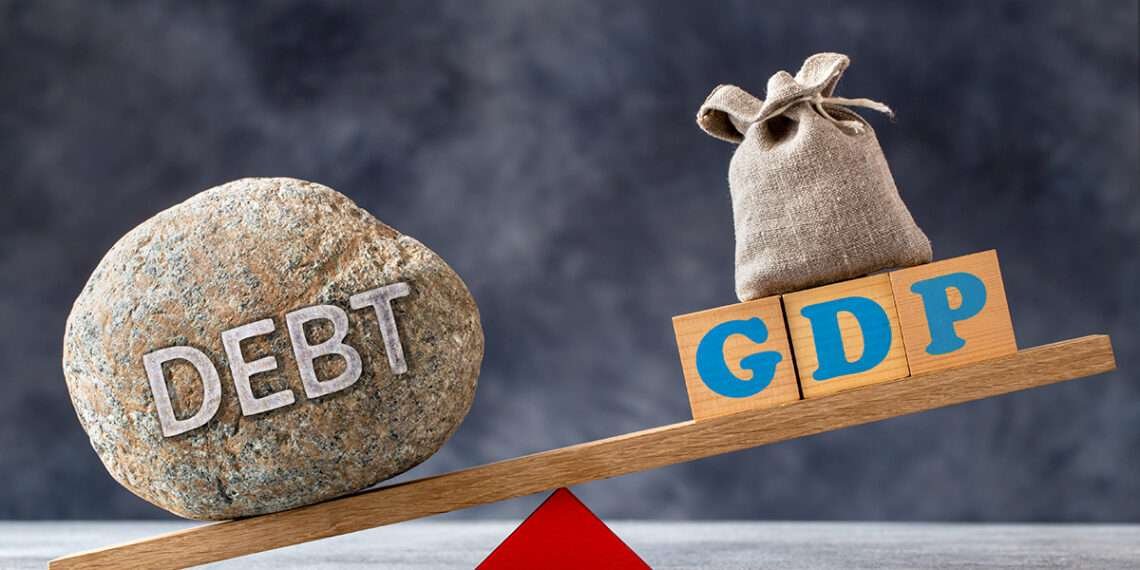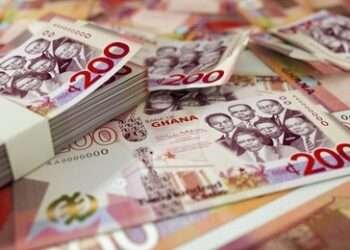Ghana’s gross public debt is expected to remain high and rising, beyond sustainability thresholds at least, in the next five years, beginning 2022 and will only see a marginal decline in 2027.
The International Monetary Fund (IMF) projects Ghana’s debt to Gross Domestic Product (GDP) ratio to rise from an estimated 81.8 percent in 2021 to 84.6 percent in 2022.
After 2022, the Bretton Woods Institution estimates public debt in West Africa’s second largest economy to see a persistent rise to 88.4 percent in 2026. However, the forecast sees public debt declining marginally for the first time in the next 6 years to 87.4 percent in 2027.
According to the Fund’s April 2022 Fiscal Monitor report, the country’s debt-to-GDP ratio rose steadily from 42.9 percent in 2013 to 62.7 percent in 2019, pre-COVID-19 era. However, in 2020, when the country was hit by COVID-19, debt rose by 15.6 percentage points over the previous year to 78.3 percent before inching up further to end 2021 at 81.8 percent.
Average debt for Low-Income Developing Countries
Since 2013, Ghana’s debt-to-GDP ratio remained very much above the average of its peer Low-Income Developing Countries, per the IMF’s classifications. General Government Gross Debt for Low-Income Developing Countries was estimated at 49.8 percent in 2021, 32 percentage points lower than the estimates for Ghana last year.
These group of countries are expected to see a marginal rise in average public debt to 50.3 percent in 2022. However, from 2023, the average debt for Low-Income Developing Countries is forecasted to see a persistent decline from 48.8 percent in 2023 to 45.9 percent in 2027. Ironically, Ghana’s debt will see consistent increase during this period and only see a little decline in 2027.

In nominal terms, data from the Bank of Ghana show that Ghana’s public debt stock rose to GH¢351.8 billion in December 2021, compared with 76.0 percent of GDP (GH¢291.6 billion) at the end of December 2020. According to the Central Bank, this accounted for 80.1 percent of the country’s Gross Domestic Product in 2021. This means the IMF’s debt-to-GDP ratio estimate of 81.8 percent of GDP in 2021 was a little higher than the 80.1 percent quoted by the Bank of Ghana.
The Bank of Ghana disclosed that domestic debt was made up of GH¢181.8 billion in December 2021, and accounted for 41.4 percent of GDP, while the external debt of GH¢170.0 billion, represented 38.7 percent of GDP.
Fiscal deficit to GDP ratio
Provisional data on budget execution for 2021 indicated an overall broad fiscal deficit (cash, excluding financial sector clean-up costs) of 9.7 percent of GDP, against the programmed target of 9.4 percent of GDP.
Meanwhile, Fitch Solutions recently forecasted Ghana’s fiscal deficit to widen to 9.8 percent in 2022. Fitch Solutions’ forecast is in line with the IMF’s expectations of the country’s deficit rising to 9.8 percent this year. Estimates by the two institutions are wider than the government’s fiscal deficit target of 7.4 percent of GDP.
“Looking into Ghana’s fiscal position following increased spending on health and household support due to COVID-19 pandemic, Ghana’s fiscal deficit widened to an estimated to 11.3 percent in 2021. This is well above historical level. Despite the fiscal consolidation efforts, we forecast that the country will record a fiscal deficit of 9.8 percent of GDP in 2022, which is well above the government’s target of 7.4 percent”.
Country Risk Analyst at Fitch Solutions, Ben Weaver
Meanwhile, in line with government’s fiscal consolidation efforts, the IMF expects government expenditure to decline to 25.2 percent of GDP in 2022, from 26.3 percent recorded in 2021. This is expected to result in the fiscal deficit to GDP ratio of 9.8 percent. For 2023 and 2024, the Fund estimates expenditure-to-GDP ratio at 25.2 percent and 23.9 percent, respectively.
READ ALSO: Government Has Been Unfair To Public Sector Workers- PSWU





















